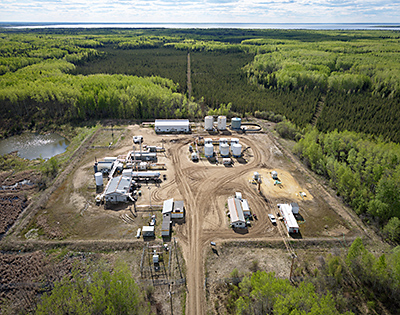Conservation Priorities
Protecting Our Natural Heritage
Premier Lougheed understood the concept of balance, saying that the economy, the environment, and social issues represent the three legs of a stool, and if any one of the legs is shorter than the others, the stool tips over. Years later, Premier Stelmach advanced this concept through the Land-Use Framework, which expressed importance of a balanced approach as follows:
Industrial activity, municipal development, infrastructure, recreation and conservation interests often are competing to use the same piece of land. There are more and more people doing more and more activities on the same piece of land. The competition between user groups creates conflict, and often puts stress on the finite capacity of our land, air, water and habitat. What worked for us when our population was only one or two million will not get the job done with four, and soon five million. We have reached a tipping point, where sticking with the old rules will not produce the quality of life we have come to expect. If we want our children to enjoy the same quality of life that current generations have, we need a new land-use system.
Today, despite a robust economy, the goal of conserving our natural heritage has fallen to the wayside. The Land-Use Framework has been abandoned and protective measures put in place by previous governments are being progressively unwound. This change in direction is out of step with the values of Albertans, who view the protection of our natural heritage as a priority.
Nature Alberta is calling for a return to a more balanced approach to resource management — one that does not sacrifice our environment for short-term economic gain. On this page we provide an overview of priority issues with links to further reading to support your engagement in these issues. We also provide a guide to environmental advocacy and an associated YouTube presentation.
1. Protecting Alberta's Rocky Mountains and Foothills Region
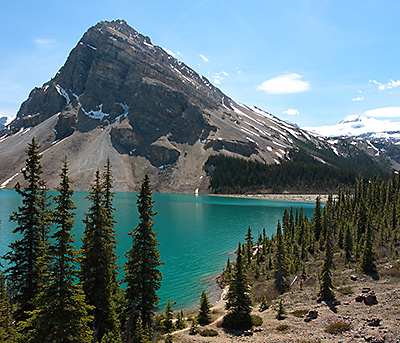 When it comes to nature, the Rockies and adjacent foothills represent Alberta’s crown jewel. This is where most of our drinking water comes from. This is where we love to go camping and fishing. And this where true wilderness still exists—one of the few places where the full complement of large predators can still be found. It's a special area that is highly valued by Albertans and demands strong protection.
When it comes to nature, the Rockies and adjacent foothills represent Alberta’s crown jewel. This is where most of our drinking water comes from. This is where we love to go camping and fishing. And this where true wilderness still exists—one of the few places where the full complement of large predators can still be found. It's a special area that is highly valued by Albertans and demands strong protection.
Unfortunately, this area—particularly the foothills—faces a variety of threats. A new approach for managing this region is needed, which includes the following elements:
- A land-use plan that places a hard limit on cumulative industrial disturbances and begins restoration of heavily damaged areas
- New protected areas within the foothills: currently only 1.4% of this region is protected
- A permanent prohibition on new coal mines
- A transition to sustainable forestry that includes a reduction in the rate of harvest and steps to ensure that the risk of flooding is minimized
- Substantive efforts to recover populations of several species at risk in the foothills, including caribou, native trout, and grizzly bears
You can learn more about the key issues, and what can be done about them, in the following articles:
- Alberta's Updated Coal Policy
- Coal mining in the eastern slopes is not in the public interest
- Coal mining update
- A Fisheye View of Cumulative Effects in Alberta’s Southern East Slopes
- Space: a frontier no longer
- What happened to sustainable forestry?
- Action for an icon (caribou conservation)
- Trails act heading in the wrong direction
2. Expanding and Safeguarding Alberta's Park System
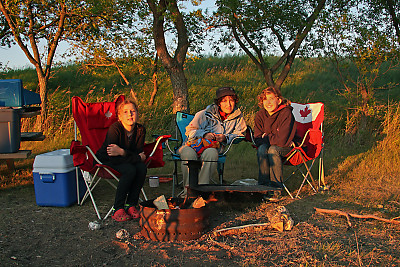 Albertan’s love their parks. It's where we go to recreate and recharge. It's also the best tool we have for protecting nature. The high value Albertans place on parks became abundantly clear in 2020, when a massive public backlash forced the government to walk back its proposal to delist 164 parks from the provincial system. Not only do Albertans love their parks, they are willing to defend them.
Albertan’s love their parks. It's where we go to recreate and recharge. It's also the best tool we have for protecting nature. The high value Albertans place on parks became abundantly clear in 2020, when a massive public backlash forced the government to walk back its proposal to delist 164 parks from the provincial system. Not only do Albertans love their parks, they are willing to defend them.
Rather than shrinking our provincial parks system, it needs to be expanded. Our existing system is heavily skewed to the mountains and the northeast region around Wood Buffalo National Park, leaving other regions such as the Foothills, Parkland, and Grassland largely unprotected (i.e., < 1.5% protected). Several additional steps should be taken to ensure that parks can serve their intended purpose:
- All parks should be considered permanent; there should be no talk of delisting any parks, ever.
- Except for Provincial Recreation Areas, the primary management objective of parks should be to maintain ecological integrity. The recent decision to allow bear baiting and cougar hunting with dogs in certain parks was a mistake and should be reversed.
- The recent dismembering of the Parks Department and placing the pieces into other departments was also a mistake. Parks need effective professional management and a higher status within government.
- Resources should be allocated to bring park interpreters back into parks
You can learn more about the key parks issues, and what can be done about them, in the following articles:
3. Protecting Caribou and Wolves
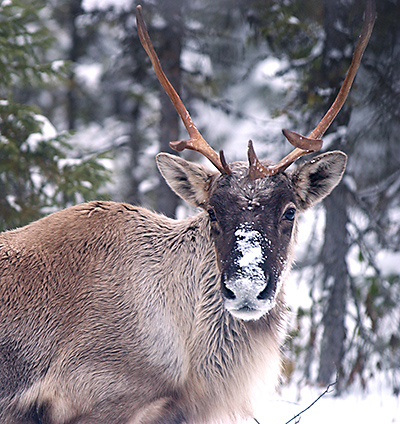 Many of Alberta's forest-dwelling species are struggling because of habitat deterioration from poorly planned industrial development. Woodland caribou are a high-profile example. Alberta's caribou herds have steadily declined since the 1970s, and many are now near the point of disappearing.
Many of Alberta's forest-dwelling species are struggling because of habitat deterioration from poorly planned industrial development. Woodland caribou are a high-profile example. Alberta's caribou herds have steadily declined since the 1970s, and many are now near the point of disappearing.
A plan for managing cumulative industrial impacts was mandated under the 2008 Land-Use Framework, and it would have meaningfully supported caribou recovery. But, like most other commitments made under the Land-Use Framework, it was never completed. In 2017, another attempt at integrated planning was made, this time in the guise of a provincial caribou range plan. This plan calls for proactive industrial planning that maintains 65% of each caribou range in an undisturbed state. This plan also prescribes wolf control to reduce predation on caribou in order to buy time for habitat restoration to have an effect.
Unfortunately, while wolves are now being killed in seven caribou ranges across the province, habitat restoration has not been occurring at a meaningful pace. Moreover, the government has proposed increasing forest harvest rates by 30%, directly contrary to the needs of caribou. Several steps are needed to get integrated planning back on track for the benefit of both caribou and wolves:
- The optimized access management system described in the 2017 range plan needs to be widely implemented. In the meantime, no further destruction of critical habitat should occur, as per the federal caribou recovery strategy,
- Restoration efforts of existing industrial disturbances within caribou habitat need to be widely implemented. A comprehensive restoration plan with clear timelines, along with progress reports, should be made public to allow for external assessment.
- Forest harvesting should be guided by ecological forest management principles rather than by maximizing the volume of timber harvested. This implies a reduction of harvest rate rather than an increase.
- The plans for the protection of core caribou habitat in northwestern Alberta, initially proposed in the 2017 range plan, need to be implemented.
- Wolf control is only acceptable as an adjunct to optimized land planning and habitat restoration, not as an alternative to these steps.
You can learn more about caribou conservation issues in the following articles:
4. Protecting Alberta's Grassland Region
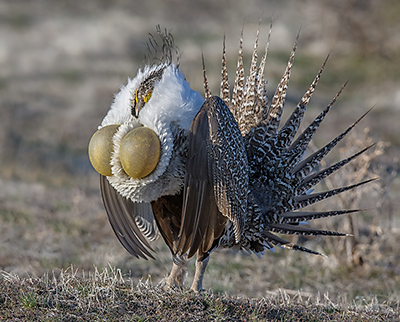 Approximately three-quarters of Alberta's species at risk reside in the grassland region. These species have declined mainly because of the conversion of native grasslands to agricultural fields, critically reducing habitat. Things have only become worse in recent decades, with the progressive intensification of agriculture.
Approximately three-quarters of Alberta's species at risk reside in the grassland region. These species have declined mainly because of the conversion of native grasslands to agricultural fields, critically reducing habitat. Things have only become worse in recent decades, with the progressive intensification of agriculture.
Although agriculture is likely to remain a social priority within the grasslands for the foreseeable future, there are several steps that should be taken to help our struggling prairie species recover:
- On Crown grasslands, the management priority should be the protection of critical habitat of species at risk. A multi-species planning approach is best, following the example of the multi-species recovery plan developed for southern Saskatchewan.
- The nearly one billion dollars in government subsidies allocated each year to agriculture should include requirements for farmers and ranchers to use practices that support biodiversity conservation. This includes reducing pesticide use (especially neonicotinoids), conserving wetlands, and retaining as much natural structure as possible on the landscape.
- The proposed expansion of irrigation in southern Alberta is ecologically unsustainable and should not proceed. Maintaining the health of our prairie rivers should be the priority.
- There should be no further sale of public lands in the grasslands, or anywhere else in Alberta
- A regional plan should be developed for minimizing harm to wildlife from wind and solar installations, especially for migrating bats and birds. This plan should define where developments can and cannot occur and at what density.
You can learn more about grassland conservation issues in the following articles:
- Diminished chorus: the decline of grassland birds
- Dancing without a stage: The state of the greater sage grouse
- What happened to the northern leopard frog?
- The plight of the bumble bee
- Shall we gather at the river? (Irrigation)
- Concerns regarding a proposed irrigation expansion in southern Alberta
- Pesticide threats to birds and biodiversity in the prairies
5. Effective Environmental Protection Policies and Management
The protection of Alberta's natural heritage requires land-use policies that properly balance economic development and environmental protection. There is also a need for professional resource managers to guide the implementation of these policies. The development of the Alberta Land-Use Framework marked an important step forward in this regard. However, in recent years, there has been a striking reversal in direction, with a progressive unwinding of protective measures put in place by earlier governments. Moreover, these major shifts in policy have been occurring in the absence of public consultation.
Albertans place a high value on nature and expect it to be protected. The following changes are needed to regain an appropriate balance between development and protection:
- Regional planning efforts need to be restarted, beginning with a regional plan for the foothills that sets limits on cumulative impacts and ensures adequate protection of biodiversity.
- Major land-use decisions should incorporate public input and ultimately serve the broad public rather than selected special interests.
- The recent weakening of environmental protection measures, as through the Red Tape Reduction Act and the Alberta Sovereignty Act, should be reversed.
- The recent dismembering of the Fish and Wildlife Division and Parks Department should be reversed.
You can learn more about environmental protection policy issues in the following articles:

